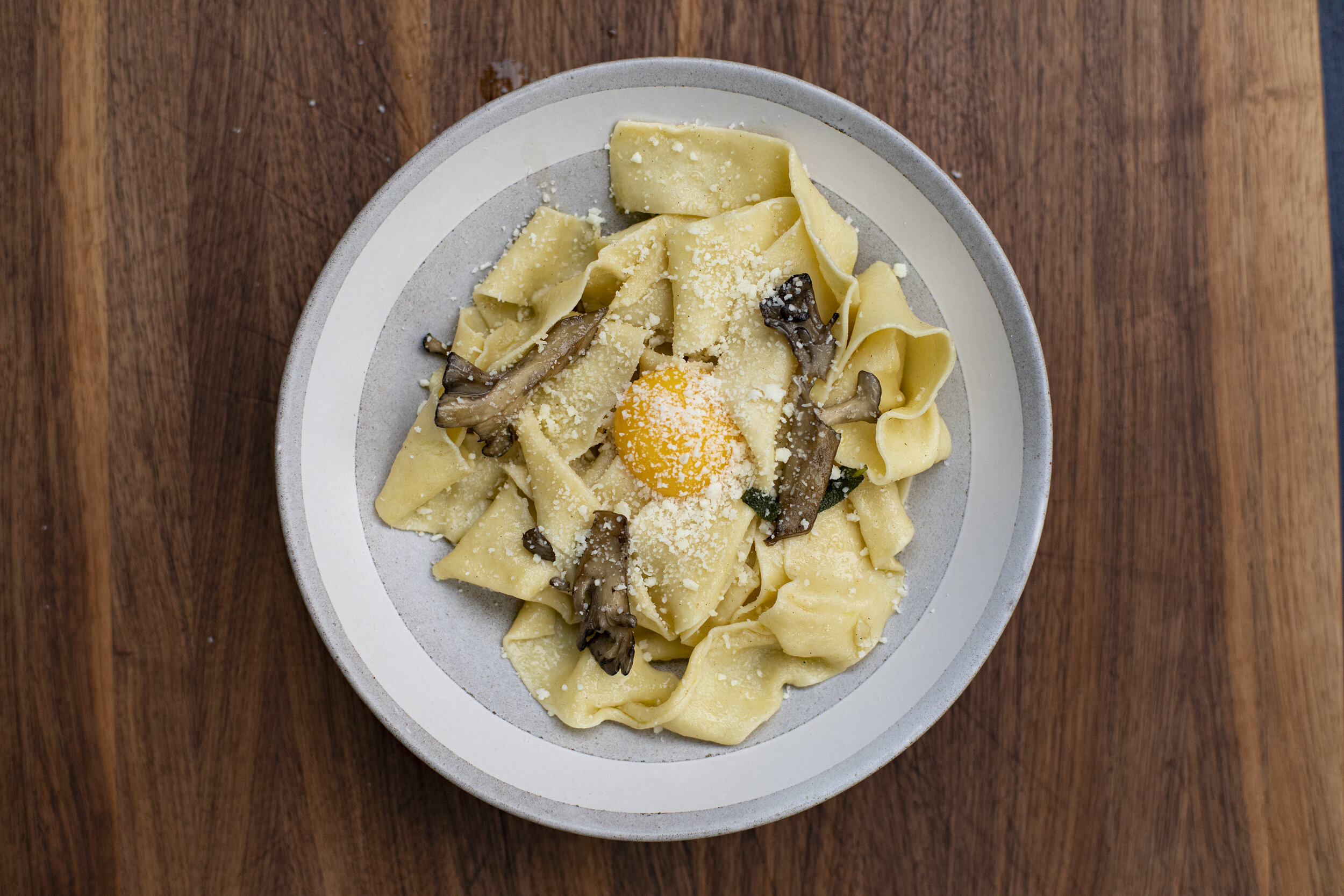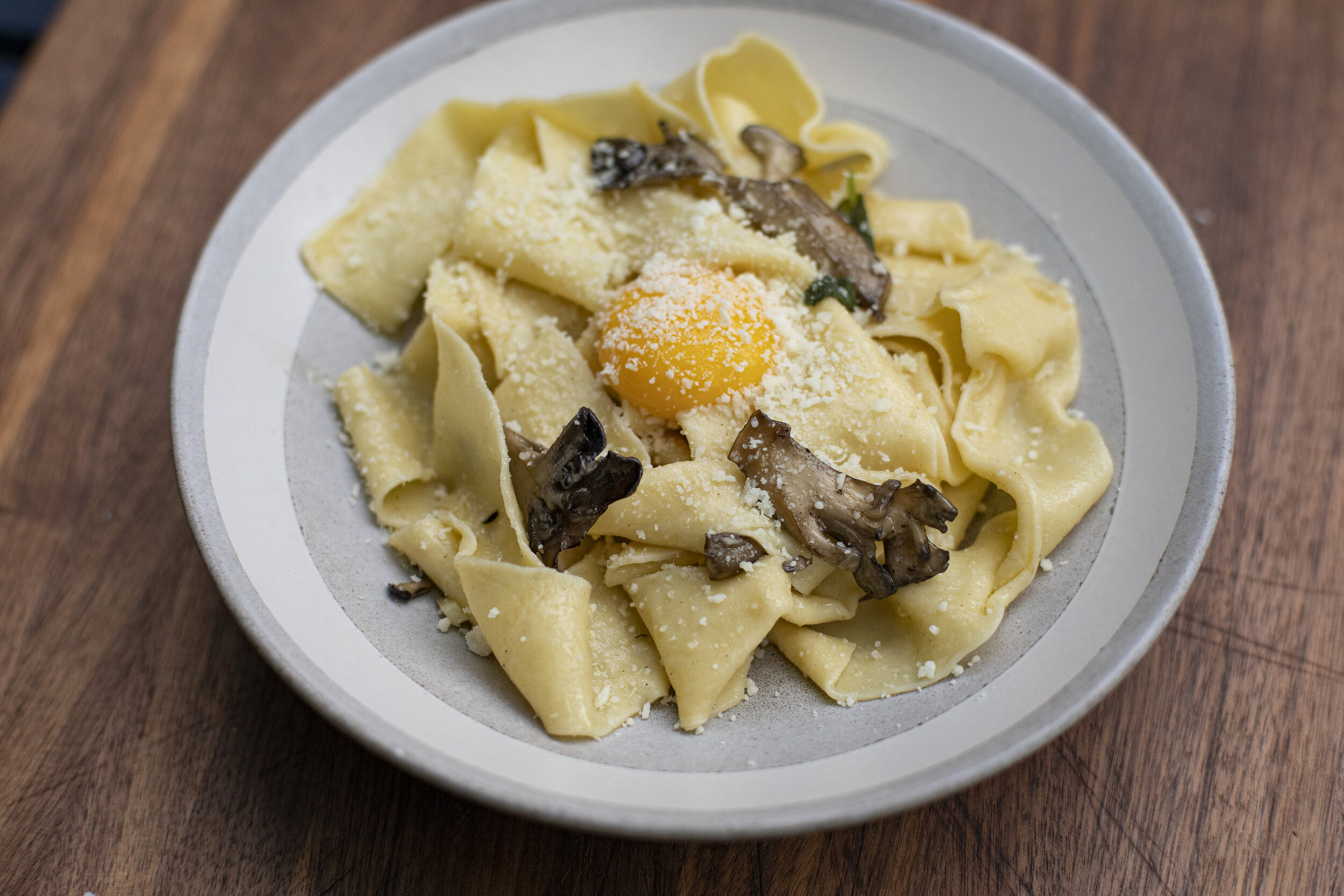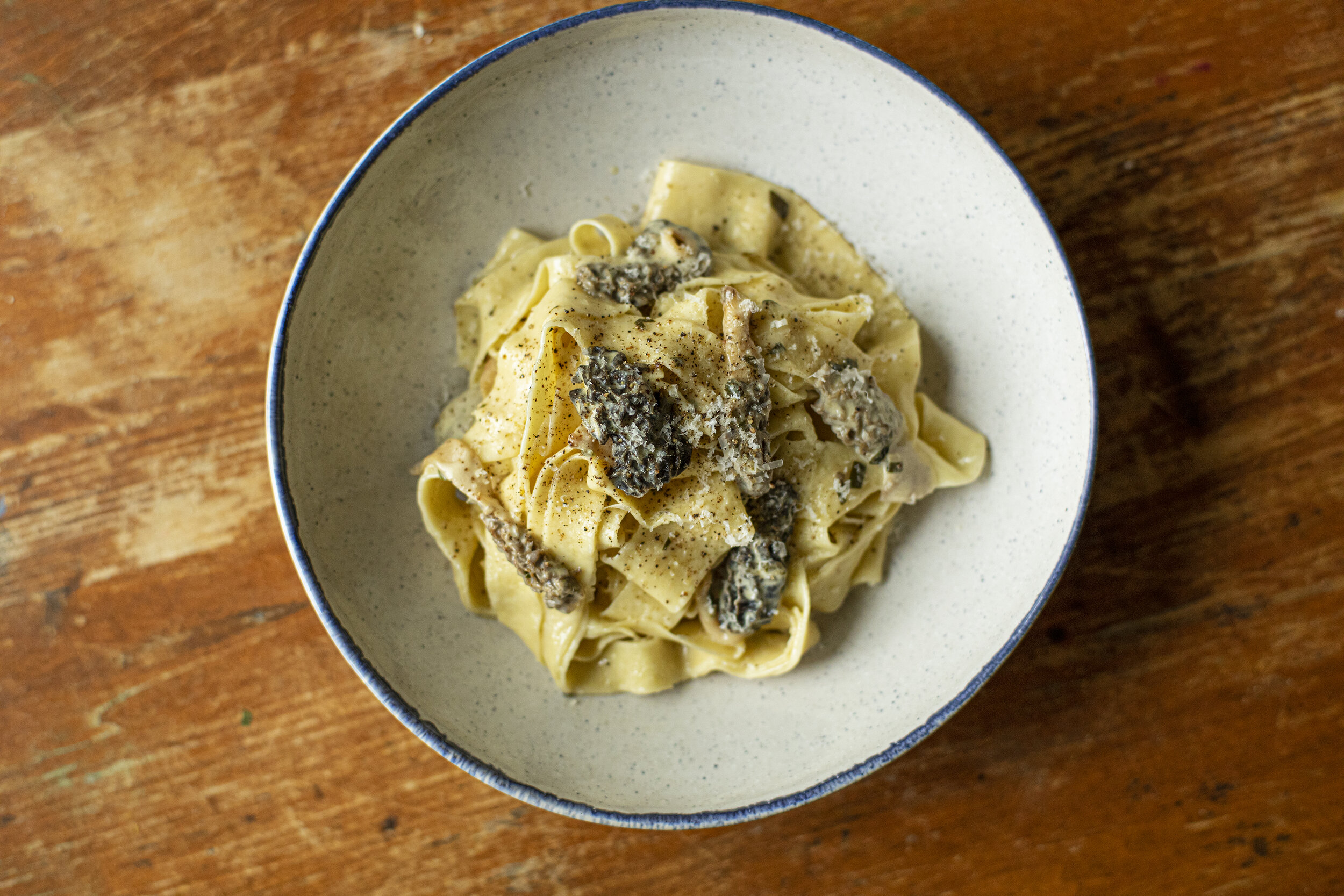Pici & Crab Sauce
Pici has been on my to-do list for a while. This style of pasta originates in the Tuscan region in Italy. It’s a thicker - rustic noodle that stands up well to ragus and heavier sauces. They're also one of the easier style pastas to make that require minimal tools or technical finessing. I opted for an eggless dough to keep it true to its roots. Flour & water- in this case a mix of 00 @mulinocaputo , tumminia flour from @molini_del_ponte_drago , and semolina. For the sauce I went pretty untraditional - a red sauce using @biancodinapolitomatoes tomatoes, white wine, chili flakes, butter, evoo, bay leaf, loads of garlic and a whole mess of blue crabs. Non traditional yes, but super decadent and well worth the effort. Video of the process is below.
The Pasta
Ingredients:
156 g semolina
168 g 00 flour
68 g tumminia flour or similar (whole wheat)
190 g water
1 tbsp olive oil
*serves 4 - 5 people
Directions:
1. Mix together the dry ingredients and form a mound in the center of your work surface. Use your fingertips to create a well in the center, like a volcano.
2. Slowly begin to pour water, little by little, into the center of the well.
3. Using a fork and bench knife, slowly begin working the flour into water, working methodically, from the center outwards, gradually incorporating more flour as you go.
4. Once the dough becomes shaggy, you can now use your hands to begin working it together with more pressure. If it feels too dry, add a little room temperature water. And if it feels too wet, add a little flour. Knead/work the dough for about ten minutes, which will result in a nice smooth, elastic ball of dough. Wrap the ball in plastic wrap (or cover with a wet towel).
5. Rest in the refrigerator for at least 30 minutes.
6. Unwrap the dough and cut off about 1/4. Wrap the portion that is on standby.
7. Lightly dust the work surface and press down to flatter the cut piece of dough.
8. Begin rolling out the dough with a rolling pin (mattarello). If you prefer to use a pasta roller for this, that will work also. Work methodically, going from the center outwards to the edges, creating a rectangular sheet (sfoglia) about the length of your hand. Sprinkle with more flour if the dough seems to be sticking to any surface. Roll it out to about a few millimeters thickness, flipping the pasta sheet over a few times to work from both sides.
9. Using a knife, working from the edge, slice ribbons of the dough about a centimeter wide.
10. One by one, take each cut piece, and gently begin rolling it in your fingertips. Start in the center, and with a rocking motion back and forth, roll the piece down into the palm of your hands, working outwards. The video below will help visualize the process.
11. Each piece of pici should be about a few millimeters in diameter - keep it mind it will swell when cooked.
12. Repeat the process with all the remaining dough, setting aside the finished pici into little nests. The nests of noodles should be sprinkled with some semolina as they air dry to prevent them from sticking. These can stay in the refrigerator for up to 24 hrs or cooked right away.
The Sauce
The preparation of the crabs is by far the most labor intensive part of this recipe. If you want to save some steps, you could use lump crab meat added to the red sauce - but you will miss out on some of the flavor you get from the simmering crabs.
Ingredients:
12 live blue crabs
3 x 28oz cans of high quality whole peeled tomatoes crushed by hand (Bianco DiNapoli, Gusto Rosso, Cento)
1 yellow onion (peeled, cut in half)
4 cloves of garlic (minced)
1/2 cup white wine
1/2 tbsp red chili flakes
1/4 cup tomato paste
2 bay leaves
Extra virgin olive oil
Few tbsp butter
Salt and pepper to taste
Directions:
Cleaning the crabs (which is a two step process) is your biggest task. There are many Youtube tutorials that demonstrate exactly how to do it so I won’t go too deep on that here. I stunned them in ice until they were in torpor before I remove the top shell, split them in half, and removed the guts. There are also strong opinions from folks who think it’s a crime to take the guts out, but for this recipe I wanted to keep the sauce a bit “cleaner.” After they are scrubbed, gutted, and split - set them aside on a bed of ice while you move on to the next steps.
Bring a large pot up to medium heat and pour in a few tbsp of olive oil.
Add the split onion halves and simmer for a few minutes before adding the bay leaf, red chili flakes, and garlic. Stir continuously to prevent burning. Add the tomato paste and continue stirring for another minute or so. Season with salt and pepper to taste.
Add the white wine and cook down for a few more minutes before adding the crabs - layering them on top of each other until they fill the pot. Stir together so they get coated in the juices on the bottom of the pan. Cover and allow to steam for about 5 minutes.
Uncover and add the tomatoes so they cover all of the crabs. Stir carefully and bring back to a simmer. Simmer for about another 20 minutes until the crabs have turned bright red.
Remove from the heat, and transfer the crabs to a large bowl to allow to cool so you can handle them. Add the butter to the remaining sauce and stir to incorporate. Set a large pot of water to boil.
Once the crabs have cooled you’ll begin breaking the shells apart to separate the meat. You’ll need one small bowl for the meat and another for the empty shells. The back fin joints provide the most choice meat, but work as diligently as you can to collect as much as you can. I like to leave a few pieces in their shells to garnish each plate.
Once you have a small bowl full of meat, you can fold it back into the sauce and stir to incorporate. Bring back to a low simmer as you cook the pasta.
The fresh pasta will take 2-3 minutes to cook.
Drain the pasta, and transfer it directly into a bowl with the hot crab sauce. Stir to coat every noodle.
Plate each dish and top with a generous spoonful of more crab sauce and a few pieces of crab claws.
Enjoy!
























































































